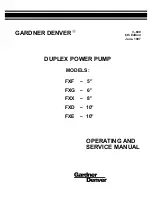
Frame
Boss
™
Instruction Manual
Fastener Selection
Drive pins and threaded studs are the fasteners
used in Ramset™
Powder Actuated (P.A.) tools.
Drive pins are best suited to general fastening and
the length of the pin that should be used is an
important factor.
Threaded studs are best used when additional
fixtures will be attached to the surface and may
need to be removable. The length of the thread is
an important consideration as well as the length
of the stud.
It is unsafe to use any other fasteners than those
that are recommended for use in a particular tool.
The selection of the correct fastener depends on
the material the fixture is being fastened to and
the thickness of the fixture.
Attaching fixtures to steel
It is important for the drive pin or threaded stud
to fully penetrate the steel to provide maximum
holding strength for a pull-out load.
THE gUIDE FOr FIxIng TO STEEL IS:
For steels of 4mm to 8mm, the required
length is calculated by adding together
the fixture thickness, the thickness of the
steel, and adding 6mm (to allow for full
penetration).
For steel over 8mm, the required length is
calculated by adding 12mm to the fixture
thickness.
Attaching fixtures to concrete
It is important for the drive pin or threaded stud
to become sufficiently embedded in the concrete
for the attachment to be successful. The depth of
embedment required is calculated by multiplying
the diameter of the shank of the pin or stud by a
factor of 6 to 8 times. The depth of embedment is
generally 22mm to 30mm for standard Ramset™
LDU (3.8mm shank) pins.
The required length for a drive pin or threaded
stud is calculated as the thickness of the fixture
plus the depth of embedment.
THE gUIDE FOr FIxIng TO COnCrETE IS:
• fixture thi 25mm,
• then select the closest size which is
equal or longer.
Fastening through a disc
On occasions a disc, or washer, is used to
give the fastener a larger head to increase its
effectiveness on softer materials such as wood,
light gauge metals and non-metals. It may also be
used to give a larger clamping area.
They are also used when fixing to concrete to
reduce the spall area, cover what spall area is left
and eliminate spall fragments.
Using a washer greatly increases the life of the
piston in a Low Velocity Tool.
7










































